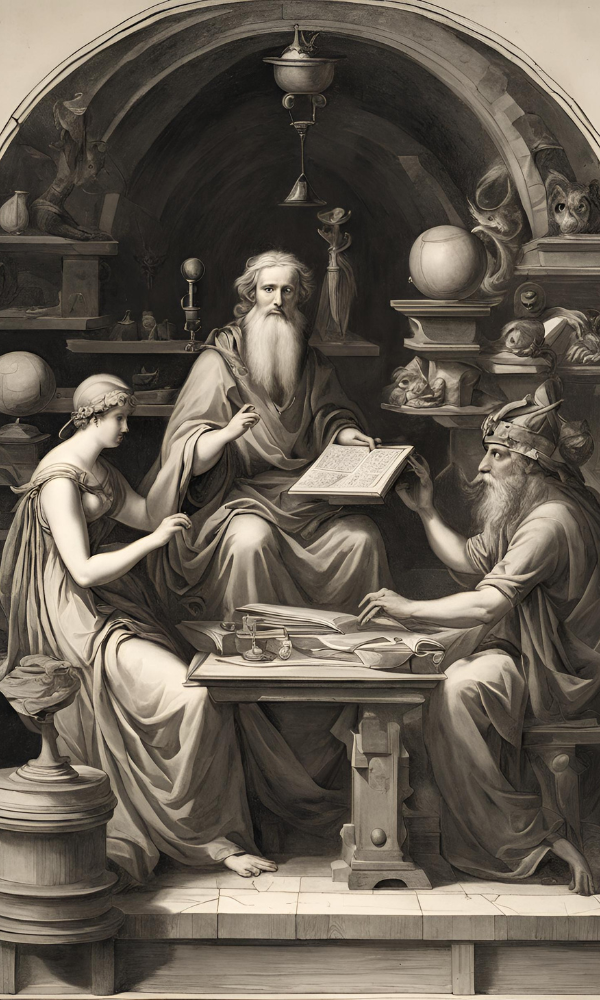/
“For those who wield the subtle energies of the cosmos, numbers are far more than mere quantities. They are keys to unlocking hidden forces, pathways to understanding the intricate web of existence.”
– Marc Gavala, a Greek Magician among the Hill Billy Conjurers
In Western magical traditions, two numerological systems are generally considered canon: Pythagorean and Chaldean. While both offer profound insights and act as gateways to esoteric power, their approaches differ.
Pythagorean Numerology:
- Origin: Attributed to the Greek philosopher Pythagoras, though likely evolved over time through various cultural influences.
- Focus: Personality analysis, self-understanding, and aligning with life’s purpose.
- Method: Assigns numbers 1-9 to letters based on their position in the alphabet.
- Strength: Widely accessible, readily applicable to various aspects of life.
Chaldean Numerology:
- Origin: Rooted in ancient Mesopotamian mysticism, predating the Pythagorean system.
- Focus: Divination, predicting future events, and understanding deeper spiritual influences.
- Method: Assigns numbers based on the vibrational essence of letters and their sounds.
- Strength: Ancient wisdom, potent for esoteric work and spiritual exploration.
The Curious Case of the Number 9:
One key distinction lies in the treatment of the number 9. In Chaldean numerology, 9 is considered sacred, a number imbued with divine power and often left unassigned to any letter. With the Chaldean system, 9 must be arrived at through the combination of other letters/numbers; it is not “given” to any number and is thus absent from the base chart. This reverence for 9 reflects its association with completion and spiritual enlightenment.
Pythagorean numerology, while still revering 9 as the representative of fulfillment, the pinnacle, and so on, includes the number on the base chart. The letters I and R correspond to the number 9 in the Pythagorean model.
Numerical Nuance, Not Dichotomy of Digits
It would be errant of me to really try and represent these two systems as this on one hand and that on the other. As is often the case in magical discussions, the topic is more nuanced than a binary dichotomy can handle.
For example, is it right to say Chaldean numerology isn’t concerned with or used for personality assessment? No, that is not true.
Can I honestly say Pythagorean numerology isn’t useful for divination or spiritual work? I definitely cannot.
I took the descriptors from established websites that rely on the respective systems. In truth it is difficult for me to tell you why you would use one system over the other.
It comes down to your intuition and aptitude, and likely also cultural, traditional, and experiential considerations.
Pair Presents Paradoxical Perfection
I use both systems. I primarily ply the Pythagorean approach and chose the Chaldean chart for additional insights and specific circumstances. As with all magical correspondences I encourage you to look on the distinctions available when applying both systems to the same situation not as a matter of right-wrong, true-false, and so forth, but rather different perspectives on the same insight or information.
I may plug us into a series on this topic as I can’t readily do it justice in a single post. For now I hope I have sufficiently muddied the water for any struggling newcomers. I say this not because I like being a dick, but because, as a non-existent wise person I am pretending to quote never said: Peering into the murk refines one’s attention to detail. Also the one who fears muddy boots and hands is unlikely to achieve any meaningful work.
Free Spells and Insights to Improve Your Magic
Plus a FREE Copy of my Astral Temple E-book
Learn to create a sacred space for magical operations on the astral plane. This rarely taught method is a powerhouse for getting great results with your spells and rituals and for refining your personal energy matrix.

Leave a Reply